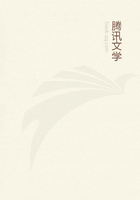In fact, it held, in some respects, an intermediate position, tending to bridge over the interval between these two groups, which in the existing fauna are so distinct. In the same way, the Palaeotherium tended to connect forms so different as the tapir, the rhinoceros, and the horse. Subsequent investigations have brought to light a variety of facts of the same order, the most curious and striking of which are those which prove the existence, in the mesozoic epoch, of a series of forms intermediate between birds and reptiles--two classes of vertebrate animals which at present appear to be more widely separated than any others. Yet the interval between them is completely filled, in the mesozoic fauna, by birds which have reptilian characters, on the one side, and reptiles which have ornithic characters, on the other. So again, while the group of fishes, termed ganoids, is, at the present time, so distinct from that of the dipnoi, or mudfishes, that they have been reckoned as distinct orders, the Devonian strata present us with forms of which it is impossible to say with certainty whether they are dipnoi or whether they are ganoids.
Agassiz's long and elaborate researches upon fossil fishes, published between 1833 and 1842, led him to suggest the existence of another kind of relation between ancient and modern forms of life. He observed that the oldest fishes present many characters which recall the embryonic conditions of existing fishes; and that, not only among fishes, but in several groups of the invertebrata which have a long palaeontological history, the latest forms are more modified, more specialised, than the earlier. The fact that the dentition of the older tertiary ungulate and carnivorous mammals is always complete, noticed by Professor Owen, illustrated the same generalisation.
Another no less suggestive observation was made by Mr. Darwin, whose personal investigations during the voyage of the Beagle led him to remark upon the singular fact, that the fauna, which immediately precedes that at present existing in any geographical province of distribution, presents the same peculiarities as its successor. Thus, in South America and in Australia, the later tertiary or quaternary fossils show that the fauna which immediately preceded that of the present day was, in the one case, as much characterised by edentates and, in the other, by marsupials as it is now, although the species of the older are largely different from those of the newer fauna.
However clearly these indications might point in one direction, the question of the exact relation of the successive forms of animal and vegetable life could be satisfactorily settled only in one way; namely, by comparing, stage by stage, the series of forms presented by one and the same type throughout a long space of time. Within the last few years this has been done fully in the case of the horse, less completely in the case of the other principal types of the ungulata and of the carnivora;and all these investigations tend to one general result, namely, that, in any given series, the successive members of that series present a gradually increasing specialisation of structure.
That is to say, if any such mammal at present existing has specially modified and reduced limbs or dentition and complicated brain, its predecessors in time show less and less modification and reduction in limbs and teeth and a less highly developed brain. The labours of Gaudry, Marsh, and Cope furnish abundant illustrations of this law from the marvellous fossil wealth of Pikermi and the vast uninterrupted series of tertiary rocks in the territories of North America.















